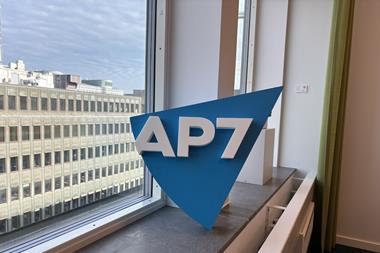The move away from DB is a trend throughout Europe but the speed at which it occurs and the models adopted differ from country to country, Rachel Fixsen finds
In the UK, Ireland and elsewhere in Europe, pension sponsors are pushing ahead with a move to defined contribution as a way of shedding the risk that defined benefit liabilities now carry. But as the bulk of DC assets expand, stakeholders are calling for improvements and closer scrutiny of the plans.
According to Roger Urwin, global head of investment consulting at Watson Wyatt, the growth of DC assets around the world is "inexorable". He adds: "We estimate they will probably overtake defined benefit assets in the year 2014 if the present rate of growth continues."
The rising costs of DB provision and ageing populations have given rise to the move away from DB towards DC across Europe, notes Ashish Kapur, DC specialist at investment firm SEI. "However, the level of change and its nature varies from country to country," he says. "On the one hand you have the UK, where the proportion of DC assets relative to the total pension assets have increased from 34% to 46%, and the move has been to ‘pure DC' arrangements where all the risk and governance burden is placed on the plan participant. On the other hand there are countries like the Netherlands, where the move to DC has been relatively slow but is gaining pace. However in the Netherlands the move has been more towards collective DC arrangements where the risks are shared between plan participants, trustees and even employers."
With state pension provision also moving to DC in countries like Sweden and Poland - and the UK from 2012 - it is just a matter of time before the primary pension provision across Europe becomes DC, Kapur says. "The big question remains whether it will be a pure DC arrangement such as seen in the UK stakeholder plans or whether it will be a hybrid DC with risk sharing between the employer and the employee," he adds.
Jenni Nicholls, (pictured right) senior investment consultant at Watson Wyatt, says the asset volume of DC schemes has prompted those running them to take a fresh look at the way schemes function. "Some companies now have a larger proportion of their employees in the DC scheme than the DB scheme, and this is making them realise that if they are going to keep their staff happy, they need to examine the overall DC package," she says.
How much effort employers are putting in to helping scheme members deal with the risks they face depends on the company, Nicholls observes. "We are seeing that some employers are fairly paternalistic and putting effort into getting these schemes to work as well as they can, but there are others who say they don't have the time and simply buy an off-the-shelf pension product."
Some DC schemes offer members such a wide range of funds to choose from that baffled savers take the default option or choose cash, says Nicholls. Scheme members can be faced with a list of 60 to 80 funds, or even more.
"This is too much choice," she says. "But we also see some well-run schemes, where there's a fiduciary committee trying to make things simple and understandable for members.
"Schemes need communication that is designed to help members make informed decisions. Getting a communications expert in is a good idea; from past experience, well-communicated exercises tend to work a lot better, and you tend to get more engagement rather than going solely into the default fund."
According to John Foster of Hewitt Associates: "The biggest hurdle companies are overcoming is trying to get the message across to people," not only telling them how the scheme works, but explaining to them what they have already accrued.
In the current environment, the predominant structure chosen for DC schemes is contract-based as opposed to trustee-based, which was the case for DB schemes. But because the FSA regulates contract-based plans and the Pensions Regulator oversees trustee-based schemes there is a lack of balance between the way both types are ruled, Foster says. "There's still potential either for information overload for the member, or a lack of governance from the employer. The gap is closing with the contact-based scheme environment, but there is still a regulatory gradient which means the contract-based schemes are less beset with difficulties."
Nicholls says a good option for employers offering a DC scheme is to use an ‘investment gateway', allowing access to funds from a range of managers rather than those of just one. "It gives you the option to cherry-pick and tailor your range according to what's right for your membership; out of 140 possible funds, an employer can choose six-to-10 to offer.
"You can also combine asset classes; while DC tends to bring growth funds to mind, which has traditionally meant equities, now it can be combined with property, and other strategies such as global tactical asset allocation (GTAA) can be bundled into that."
She highlights the importance of paying attention to the asset management fees involved. "You can have the best fund in the world, but if its got high fees then all the potential added value is eroded - so you have to look at the net of fees proposition,"
she stresses.
Paul Cook, partner at Grant Thornton in the UK, suggests that apart from simply communicating to members what their options are, companies can take a more thoughtful approach in encouraging scheme members to save adequately for retirement. For example, new staff can be required to actively opt out of the pension scheme when they join rather than be required to take steps to join it, he says. "They can encourage people to join at a low contribution rate, but later to increase that. People will sign up for that because they know they should save more for their pension, but this way it seems less painful.
"There are a lot of behavioural techniques that are coming into the design of DC that are quite subtle and something we haven't seen before," he says.
Cook sees DC expanding until it covers practically all of the UK's pensions landscape. But he notes that there are voices speaking out against the switch to DC, citing the recent strike at Scotland's Grangemouth oil refinery over proposed changes to its pension arrangements. In this case, the action was in protest at plans to close the final salary (DB) pension scheme to new workers and reduce provision for existing members.
In general, however, complaints have been more short-sighted, he says. "There are voices against, but those voices tend to focus on protecting those who have DB. The protection is around what people have, rather than preserving it for generations to come."
DC schemes have gained acceptance with the public not least because they are easier to understand than final salary schemes. "I don't see us ever turning back culturally; we'd rather see money in an account than something we don't understand. The media has picked up on this idea of gold-plated DB schemes, but it was never appreciated."
In Ireland, Fiona Daly, managing director of Rubicon Investment Consulting, observes that all new schemes being set up are created on a DC basis, and there has been some closure of DB schemes.
According to the Irish Association of Pension funds, at the end of 1999 there were 70,478 DC schemes with 144,425 members; nine years later, the number of schemes had risen 40% to 98,483 and the number of members was up 87% to 269,465.
"Under the regulations, the trustees are obliged to supply sufficient information to help people make a choice," says Daly.
How well schemes communicate depends on the employer, she says. "I think a lot of schemes aren't putting enough effort into explaining the need to save adequately and the risk of the various investment strategies - that's evidenced by the number of people in the default option; it shows people don't feel capable of making these decisions themselves.
"There is a lot more companies could do by way of encouraging them to participate in the investment process," she says, putting this shortfall down to costing or because the services are simply not available.
Daly says that the huge transfer of risk from the employer to the employee that is inherent in a move to DC from DB is seen by some as going too far. Recently, hybrid schemes have been set up as a compromise on the risk transfer front.
Having closed its final salary scheme, the Bank of Ireland is introducing a hybrid DB/DC pension scheme. Called LifeBalance, this new project consists of a mandatory cash balance-type account alongside an optional personal investment account - DC in design but incorporating matched contributions of up to 3%.
"That has generated some interest and there has been a discussion about hybrid schemes," Daly says. "They have been mulled over as a solution to the risk transfer problems. It is possibly that they will be more available. Maybe the regulations need to be adapted to make them more appealing."
The option of employers contributing more to the schemes is one of the issues being looked at in Ireland's pensions green paper, she says. As things stand, contributions to a DC scheme in Ireland tend to be 11% of salary, with 6% of that coming from the employer.
"The problem with political interference is that a pension scheme is voluntary, and if the government forces companies to contribute more, then there's a risk that they won't provide pensions at all," she says. "So it's a balancing act."
Jerry Moriarty, (pictured left) director of policy at the Irish Association of Pension Funds, says there are now more members of DC schemes than DB in the private sector. "The shift here has not been as pronounced as in the UK but many DB schemes have closed to new entrants.
"With the pressure DB schemes are under in terms of the funding standard and increasing cost and regulation it is only likely to continue in that direction. Likewise, if the Solvency II directive were to be applied to pension schemes it is hard to see how they would be able to continue taking into account the increased funding requirements."
It is important that members are equipped with the knowledge to be able to make decisions, he says. But he maintains it is also up to the members themselves to take more interest in what is going to have a serious effect on their future. "I also believe that the state should do more to provide financial education starting at school level to ensure that people are equipped with at least a basic knowledge of the factors to consider when making the major financial decisions they will be faced with in life," he adds.
In the OECD's recent working paper on insurance and private pensions, Colin Pugh and Juan Yermo say the problems of implementing pure DC plans are now becoming clear. "The cracks are beginning to show," they say. "As an ever-increasing number of employees are retiring under such plans, the consequences of inadequate contributions, poor investment choices by employees, high management costs and the dramatic and continuing increase in annuity purchase rates on generating inadequate retirement pensions are becoming painfully obvious."
This, they claim, is another reason for a redistribution of risk between plan sponsors and employees in the form of hybrid DB arrangements. "Such plans generally offer higher benefit security than pure DC plans while lowering costs to plan sponsors relative to traditional DB arrangements."
Pat Wynne, director of employee benefits consultancy Xafinity, sees contribution levels as the biggest issue with DC. "The average total DC contribution is 9% with employer contributions averaging just under 7%. This is less than half the average DB employer contribution and less than half what is needed to provide a good pension."
Foster acknowledges that schemes are still driven by the level of contribution rather than the eventual benefit. "In many cases the sponsor has no appreciation of what those benefits are likely to be. We haven't seen that resulting in widespread pressure on employers to increase their contribution level."
"Because DC is relatively immature, there aren't lots of people coming to retirement age, so there isn't the critical mass of pensioners saying is this all I get?
"It is only a matter of time before the benefits provided by a medium-sized DC scheme are compared to a 1/60th final salary scheme, the difference will become apparent for a widening group."












No comments yet